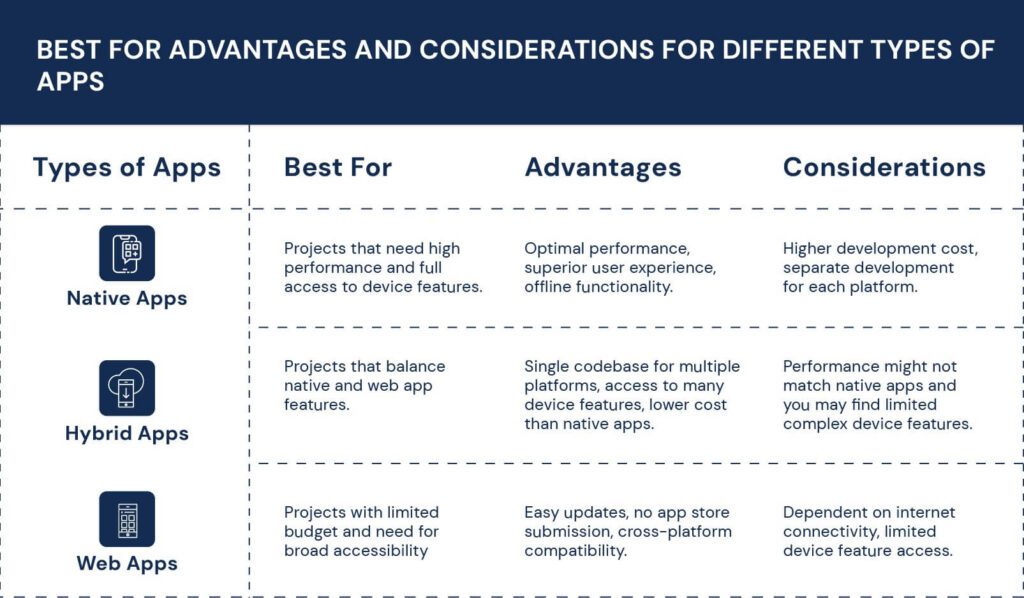The journey from an idea to the app store is intriguing and full of innovation and strategy. With custom mobile app development services and cross-platform app development capabilities, mobile apps come into existence and reach us through the app stores.
Progressing further into 2024, the landscape of mobile app development seems promising. Mobile app development services tend to improve with technological advancements and changing consumer demands.
This article will help readers understand the basics of mobile app development, what is a mobile app development roadmap, its importance, the step-by-step app roadmap involved in creating a successful mobile application.
What is Mobile Application Development?
Mobile app development refers to the process where a mobile app development company creates software applications that run on mobile devices, such as smartphones and tablets.
These applications are either pre-installed on devices when the manufacturing is underway or deployed as web apps through server-side or client-side processing. They tend to provide an “application-like” experience within a web browser.
An Android application development company specializes in the same mobile application development services as an iOS development company.
Mobile Application Development Platforms
Now let’s look at some of the widely used mobile app development platforms:
-
Flutter
Flutter is a popular framework for building cross-platform apps with a single codebase. It uses the Dart programming language and provides a native-like performance with customizable UI widgets.
Google Pay and Alibaba are built using Flutter.
-
React Native
React is another widely used platform for cross-platform app development. It uses JavaScript to create apps that share most of the codebase between Android and iOS.
Apps like Instagram and Airbnb use React Native for their cross-platform components.
-
Xamarin
Microsoft Xamarin is a powerful platform for developing native apps with C# and .NET. It enables developers to create apps for Android and iOS with a shared codebase.
Xamarin is integrated with Microsoft Azure which makes it an essential part of enterprise app roadmap.
-
Swift
Swift is the primary language and platform for iOS-specific platforms. It is optimized for building high-performance native apps for the iOS and macOS ecosystems.
Types of Mobile Apps
Developers categorize or sort mobile apps into three main kinds:
1. Native Apps: A mobile application development company manufactures native apps for a specific operating system. It could be iOS or Android with the help of platform-specific programming languages (Swift or Kotlin/Java).
Native apps usually have a separate codebase and, therefore, have exceptional performance and impeccable user experience.
2. Web Apps: These are essentially responsive websites that adapt to the screen size of the device. Web apps are accessible through a web browser and are usually not installed on the device.
Web apps are cost-effective and easy to maintain, but they may not provide the same level of performance and user experience as native apps. A custom app development company can help tailor these web apps to meet specific business requirements to ensure optimal functionality and user engagement.
3. Hybrid Apps are unusual combinations or mixtures of native and web apps. They are developed using cross-platform services and web technologies, including HTML, CSS, and JavaScript.
Afterward, they are draped in a native container. This allows them to be installed on devices like native apps while being easier and cheaper to develop than fully native apps. Hybrid apps possess cross-platform mobile development capabilities.

What is a Mobile App Development Roadmap?
A mobile app development roadmap outlines the stages, milestones, and steps required to take an app idea from concept to launch.
An app roadmap is a strategic plan for the development team and stakeholders. It ensures the app’s development is systematic and aligned with business goals.
What does an app development roadmap look like? Usually, it is represented as a visual timeline, chart, or board that maps out the various stages of development. It can take several formats depending on the team’s tools and preferences.
Why is a Mobile App Development Roadmap Important?
Working smarter rather than harder is more important if you want to progress. You can develop a mobile app through trial and error, but why go through all that hassle? With an app roadmap, you can achieve your development goals faster and more efficiently.
Here is how a road for mobile app development is important:
- Clear Vision
About 70% of users stop using the app within the first 90 days after downloading it. That drop in users is due to a lack of proper targeting.
An app roadmap provides a clear vision and a bigger picture of the whole project. Developers can ensure their development efforts align with business goals, market trends, and target audiences.
- Onboarding All Stakeholders
Mobile app development is not just a technical endeavour. Other internal and external stakeholders are involved in the process.
With an app roadmap, teams can also focus on creativity and post-deployment aspects, such as marketing. Taking all stakeholders into confidence is crucial for the success of any mobile app.
- Proper Resource Allocation
Each phase of the mobile app development process requires considerable resources. With an app roadmap, you can identify key stages such as design, coding, testing, and deployment and allocate resources effectively.
This minimizes wasted time and money while ensuring the right expertise is applied to each phase.
Mobile App Development Roadmap: Build A Successful Mobile Application
Now that you know why an app roadmap is essential, let’s go through the detailed roadmap for building a mobile application.
-
Ideation and Research
The first step in mobile app development is to brainstorm and conceptualize the app idea. This process encompasses problem identification or need realization.
The app aims to address those problems and needs. Conducting thorough market research is crucial at this stage to understand the target audience, analyze competitors, and validate the app idea.
Tools like SWOT analysis (Strengths, Weaknesses, Opportunities, Threats) can help articulate a clear vision for the app.
-
Defining Goals and Objectives
You have an idea and vision for the app! That’s great, but now you have to think of the practical aspects. What is the app’s expected revenue? What are the deadlines? What do you wish to accomplish with this app? Are you looking to increase brand awareness or provide a solution to a specific problem?
Setting SMART goals (Specific, Measurable, Achievable, Relevant, and Time-bound) will provide a roadmap for the development process and help measure success.
-
Creating a Wireframe
A wireframe is more of a blueprint that acts as a visual guide for the app’s skeletal framework. It outlines the app’s structure, user interface (UI) elements, and navigation flow.
Wireframing tools like Sketch, Adobe XD, and Sigma are widely used to create wireframes that help in visualizing the app’s design and functionality. This step is crucial for identifying potential usability issues early in the process.
-
Design and User Experience (UX)
The design phase in an app roadmap is all about the development of an intuitive, responsive, interactive, and engaging user interface.
This includes selecting color schemes and typography and designing UI elements like buttons, icons, and menus. UX design, on the other hand, ensures that the app provides a seamless and enjoyable experience for users.
User testing and feedback play a vital role in refining the design to meet user expectations.
-
Development
During development developers come up with the code for the app. It divides into two distinct fragments:
Frontend Development: Where the user interface and experience are built is called frontend development services. It involves coding the visual elements that users interact with.
Backend Development: In backend development, developers set up the server, database, and application logic. The backend ensures that the app can handle user requests, store data securely, and perform necessary computations.
Developers write and test code using Integrated Development Environments (IDEs) like Xcode for iOS and Android Studio for Android.
Agile development methodologies, which involve iterative cycles of development and testing, are commonly used to ensure flexibility and responsiveness to changes.
-
Testing
Thorough testing is critical to ensure the app functions correctly and provides a smooth user experience. Multiple and diverse sorts of testing take place, including:
Functional Testing: Its purpose is to maintain and ensure the functionality of the app and its features as intended.
Usability Testing: This one is helpful in assessing the usability of the app which includes ease of use and user experience.
Performance Testing: Evaluate the app’s performance under different conditions, such as load times and responsiveness.
Security Testing: This testing identifies vulnerabilities and ensures the app is secure from potential threats.
Automated testing tools and frameworks like Appium, Selenium, and Test Complete are widely used to streamline the testing process and improve efficiency.
-
Deployment
Once the app passes all testing phases of the app roadmap, it is ready for deployment. This involves publishing the app to app stores like Google Play Store for Android apps and Apple App Store for iOS apps. Each app store has its own set of guidelines and approval processes, which must be adhered to.
Preparing marketing materials, such as app descriptions, screenshots, and promotional videos, is also essential for a successful launch.
-
Post-Launch Support and Maintenance
The development process doesn’t end with deployment. Continuous monitoring, updates, and improvements are necessary to ensure the app remains relevant and functional.
Gathering user feedback, tracking performance metrics, and addressing any issues or bugs promptly is crucial for maintaining user satisfaction and retention. Regular updates that introduce new features and enhancements keep the app competitive in the market.
Key and Upcoming Trends in Mobile App Development
As we move further into 2025, several emerging trends are shaping the future of mobile app development:
-
Artificial Intelligence and Machine Learning
AI and ML are integrated into mobile apps to provide personalized experiences, predictive analytics, and advanced features like voice recognition and chatbots.
-
5G Technology
The widespread adoption of 5G is enabling faster data transfer speeds and lower latency, allowing developers to create more sophisticated and responsive apps.
-
Augmented Reality (AR) and Virtual Reality (VR)
AR and VR technologies are increasingly being used in mobile apps to create immersive and simulated experiences in gaming, shopping, education, and more.
-
Internet of Things (IoT)
IoT integration in mobile apps is growing, allowing users to control and interact with connected devices seamlessly.
-
Cross-Platform Development
Tools like Flutter and React Native are gaining popularity because they allow developers to develop apps that work on multiple platforms with a single codebase, reducing development time and costs.
Wind Up
Mobile app development could be the difference between failure and success in the digital age. Understanding the process, from ideation to post-launch support, is essential for creating successful and impactful mobile applications.
An app roadmap plays a vital role in improving communication across a company. Allowing teams to work together more effectively. It provides a clear snapshot of the app development process.
Showing where the team stands and how efforts align with the broader product vision and strategic goals. Before starting to plan an application development roadmap, it’s essential to carefully review and complete all the stages discussed in this guide.
A thoughtfully designed app roadmap will help your team handle the development process with ease. Developers can harness mobile apps’ full potential and utilize them to drive innovation, create remarkable applications, and achieve business goals in 2025 and beyond.
If you need further help, you can contact us at [email protected]. We will schedule a free consultation session to explore how Xavor can assist you in this matter.

